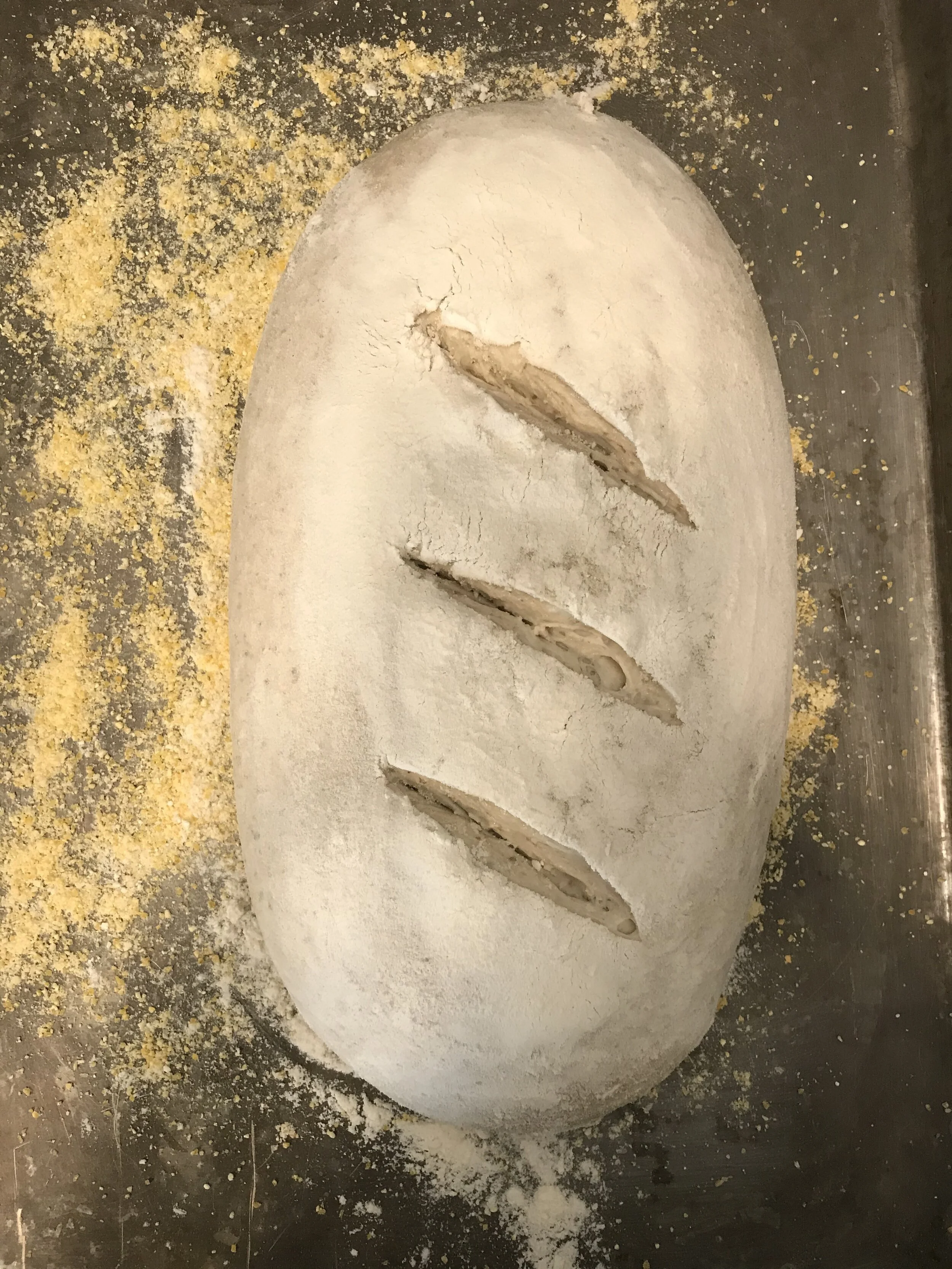What happens when your oven isn’t humid enough
Ahoy there folks! This weekend I baked a loaf of bread when the oven was not humid enough. (New oven, freshly without a dutch oven, still getting used to it). Anyways, it turned out with a big poop baby of bread, so I thought I’d share why/how this happened and the result. The reason why it is so good to bake bread in a dutch oven is because the walls of the oven trap the moisture and steam released from the bread itself, creating a humid hot pot. The moisture in the air softens the dough enough to let it stretch and accommodate all the yeast farts that are occurring as the heat from the oven super-speeds the fermentation process. When this happens, the bread might crack open and leak out dough in order to accomodate all of the expansion. It’s really not a big deal, the loaf just won’t turn out perfectly shaped. I thought that it would be humid enough since I had a dish of water in the oven during pre-heating and throughout the bake and spritzed the loaf with water right before going in and twice within the first twenty minutes. But alas, ‘twas not enough. I baked it at 500 degrees for the first twenty minutes and then 450 until golden brown. That is what I’ve been doing with the cast iron dutch oven, but I was without that this weekend and it was a new oven. Perhaps it runs hot? Either way, I will probably not go as high next time to see if the oven is able to stay more humid with a slightly lower temp (I will probably do 450 to start, then maybe lower it to 425 or something…or leave it at 450, we’ll see what I feel like in the moment). See below for pics of what I’m describing!
In addition to my bread birthing a tumor, it didn’t have a huge oven spring and that classic sourdough ear was missing. I am attributing that to the lack of flexibility in the dough as well, since the crumb was fairly airy and indicated that the gluten bonds were strong. However, sometimes the same result of no ear/oven spring can occur when you don’t knead your bread enough. Kneading creates the long protein strands that form gluten. The stronger the gluten, the stronger the bread. Strong gluten is important to be able to stretch and accommodate the yeast farts without breaking. If the gluten isn’t strong enough, it will collapse under the air pressure, forming a really dense bread. I’ve often heard complaints from first-time bakers that their loaf turns out like a hockey puck. Knead more, my friends, that’s all it takes.
A snapshot just before going in the oven. My score lines were 1.5 inches deep…so it should’ve been enough to all expansion…
Top view——you can see how the surface of the dough could not stretch to expand
It’s poop baby!! You can see the large crack that split open to allow expansion, and how it overflowed out into this tumor-looking bulge
Looks really don’t matter all that much though, it was still delicious and had a fairly decent airy crumb!



